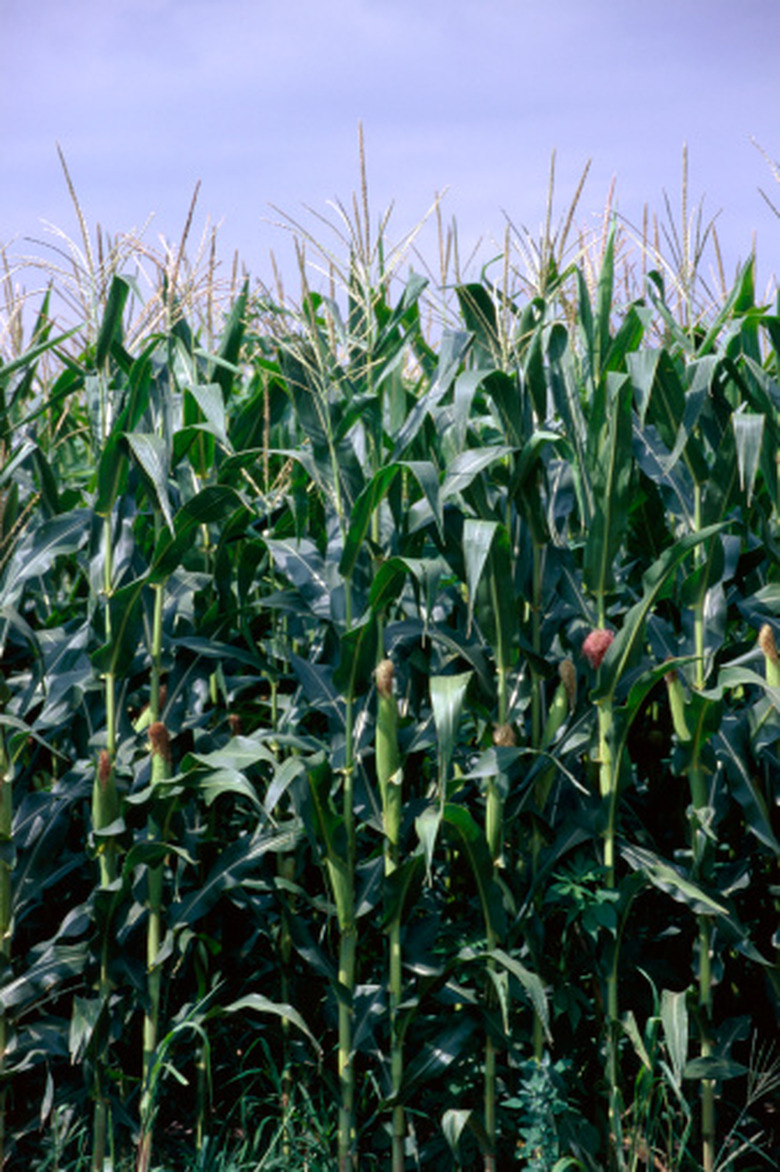How Much Sun For Corn?
Fresh sweet corn is among the most celebrated summertime crop from the home garden, but it is not the only natural variety of Zea mays grown in gardens or farmers' fields in the United States. Other corn types include grain field corn, ornamental/Indian corn and popcorn. Regardless of corn type, all are tropical annual grasses that need a fertile soil that is warm. Lots of sunshine and ambient heat and humidity allows the corn plants to bloom and develop rows of kernels on each cob.
Light Requirements
Always choose a garden location that basks in full, all-day sunlight when growing corn. A full sun location receives direct sun rays for no less than 10 hours daily. Corn plants may still grow, albeit a little shorter and slower, in partial sun, but less than eight hours of sun is not conducive for plants to bloom and form cobs. The heat from sunlight warms the soil in spring adequately to allow seeds to germinate. Sunlight also promotes the best growth and photosynthesis in the limited number of leaves on each corn stalk.
Spacing
Because of corn's need for lots of sunlight, proper spacing of plants and rows ensures growing plants do not shade each other to detriment. The mature height of a corn depends on its variety, which genetically disposes them to reach a maximum height anywhere from 4 to 12 feet. All corn plants are rather narrow, never getting much wider than 20 to 30 inches; leaves tend to grow and orient in one plane on each stalk. Sow seeds 8 to 18 inches apart in linear furrow rows or hills. Space additional rows 30 to 36 inches apart.
Garden Organization
Besides needing to locate a corn patch in a fertile soil in full sun and spacing plants so they don't shade each other, you must also worry about pollination. Corn stalks bear female flowers in silks on the ear while the male pollen flowers occur high up on the stalk's tassel. Corn plants are wind pollinated. Without pollination of the ear silks, corn kernels will not form. Plant corn in multiple rows in a block or grouped format rather than in one singular long row. This ensures wind blows pollen among plants.
Corn Maturation
Lots of sunlight allows the corn plant's narrow and few leaves to make carbohydrates to fuel creation of the kernels on the corn cob. Sweet corn kernels are plump, juicy and immature – the tastiest time to eat them. Conversely, grain field, popcorn and Indian corn must fully mature and then dry on the cob to be ready for harvest and long-term storage. While sweet corn may be harvestable merely 70 days after planting. Corn types that must fully mature and dry kernels and cobs may need a sunny garden plot free from frost for upward of 120 to 150 days after planting.
References
- Purdue University Extension; Growing Sweet Corn; B. Rosie Lerner, et al.
- "A-Z Encyclopedia of Garden Plants"; Christopher Brickell and H. Marc Cathey, eds.; 2004
- Iowa State University; Growing, Harvesting and Storing Popcorn; Cindy Haynes; 2000
